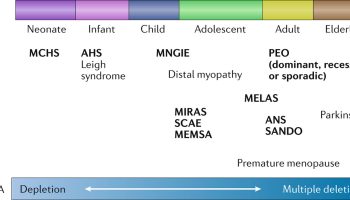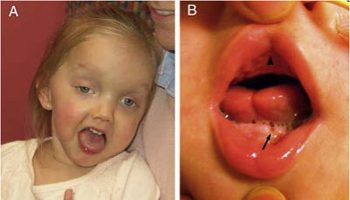Klebsiella pneumoniae infection
Klebsiella pneumoniae is a member of the Klebsiella genus of Enterobacteriaceae family and is described as a gram-negative, encapsulated, non-motile bacterium that is commonly found in nature and belongs to the normal flora of the human mouth and intestine, that causes a wide range of infections, including pneumonia, urinary tract infection (UTI), bacteremia, and liver abscesses 1. Furthermore, Klebsiella pneumoniae strains have become increasingly resistant to antibiotics, rendering infection by these strains very challenging to treat. Historically, Klebsiella pneumoniae has caused serious infection primarily in immunocompromised individuals (e.g., pneumonia in the alcoholic and diabetic patient population) and/or people who have an implanted medical device (such as a urinary catheter or airway tube), but the recent emergence and spread of hypervirulent strains have broadened the number of people susceptible to Klebsiella pneumoniae infections to include those who are healthy and immunosufficient. Many Klebsiella infections are acquired in the hospital setting or in long-term care facilities. Today, Klebsiella pneumoniae pneumonia is considered the most common cause of hospital-acquired pneumonia in the United States and the organism accounts for 3% to 8% of all nosocomial bacterial infections 2.
Humans serve as the primary reservoir for Klebsiella pneumoniae. In the general community, 5% to 38% of individuals carry the organism in their stool and 1% to 6% in the nasopharynx. However, higher rates of colonization have been reported in those of Chinese ethnicity and those who experience chronic alcoholism. In hospitalized patients, the carrier rate for Klebsiella pneumoniae is much higher than that found in the community. In one-study, carrier rates as high as 77% can be seen in the stool of those hospitalized and is felt to be related to the amount of antibiotics that are being given 3.
Klebsiella pneumoniae bacterium typically colonizes human mucosal surfaces of the oropharynx and gastrointestinal (GI) tract 4. Once Klebsiella pneumoniae bacterium enters the body, it can display high degrees of virulence and antibiotic resistance. In fact, Klebsiella account for up to 8% of all hospital-acquired infections.
The antibiotic regimen for Klebsiella infections will vary depending on the organ system involved and the results of susceptibility testing. Uncomplicated cases of Klebsiella infections that are not drug-resistant may be treated with antibiotics like other bacterial infections. Infections acquired in the hospital setting may be more difficult to treat because they are more likely to be resistant to many antibiotics. Those who are infected with an antibiotic-resistant strain of Klebsiella should be placed on contact isolation precautions. Infectious disease doctors may be helpful in distinguishing between Klebsiellae that is causing an infection and Klebsiellae that are present without causing harm (colonization) 5.
Klebsiella pneumoniae causes
Humans are the primary reservoir for Klebsiella pneumoniae 6. Carrier rates of Klebsiella pneumoniae in the community range from 5 to 38 percent in stool samples and 1 to 6 percent in the nasopharynx; Klebsiella species are rarely carried on the skin 7. Higher rates of nasopharyngeal carriage have been noted in ambulatory alcoholic patients 8. Chinese ethnicity itself might be a major risk factor for intestinal colonization; stool carrier rates of Klebsiella pneumoniae in healthy Chinese adults ranged from 19 percent in Japan to 88 percent in Malaysia 9.
Carrier rates are markedly increased in hospitalized patients, among whom reported rates are 77 percent in the stool, 19 percent in the pharynx, and 42 percent on the hands 7. The higher rates of colonization are primarily related to the use of antibiotics 10. This increase in prevalence is important clinically since, in one report, Klebsiella nosocomial infection was four times higher in stool carriers compared with noncarriers 11. Similarly, in a study of 855 patients with Klebsiella pneumoniae liver abscess in Taiwan and 3420 age- and sex-matched controls, ampicillin or amoxicillin use within the prior 30 days of diagnosis (but not the prior 31 to 90 days) was associated with an increased risk of liver abscess 12.
Host factors that lead to Klebsiella pneumoniae colonization and Klebsiella pneumoniae infection include the following:
- Hospitalization (especially admission to an intensive care unit)
- Immunocompromised states (eg, diabetes, alcoholism)
- Antimicrobial therapy
- Prolonged use of invasive medical devices
- Inadequate infection control practices
- Severe illness, including major surgery
Klebsiella pneumoniae bacterium gains access to the body either by direct inoculation through breached epithelial surfaces or following aspiration of oropharyngeal organisms.
Klebsiella pneumoniae can cause community-acquired pneumonia. In the United States, community-acquired pneumonia is more common in alcoholics or in those with diabetes or other underlying health concerns 13. In the United States, many Klebsiella infections are acquired in the hospital or in long-term care facilities. Those with an underlying medical disorder, those who are immunocompromised, those with an implanted medical device (such as a urinary catheter or airway tube), and those being treated with antibiotics are at greater risk for acquiring a Klebsiella infection 6.
Widespread antibiotic use has resulted in antibiotic-resistant strains which are harder to treat. Klebsiella pneumoniae is one of a handful of bacteria that is now experiencing a high rate of antibiotic resistance secondary to alterations in the core genome of the organism. Alexander Fleming first discovered resistance to beta-lactam antibiotics in 1929 in gram-negative organisms. Since that time, Klebsiella pneumoniae has been well studied and has been shown to produce a beta-lactamase that causes hydrolysis of the beta-lactam ring in antibiotics. Extended beta-lactamase Klebsiella pneumoniae was seen in Europe in 1983 and the United States in 1989. Extended beta-lactamases can hydrolyze oxyimino cephalosporins rending third-generation cephalosporins ineffective against treatment. Due to this resistance, carbapenems became a treatment option for extended beta-lactamase. However, of the 9000 infections reported to the Centers for Disease Control and Prevention (CDC) due to carbapenem-resistant Enterobacteriaceae in 2013, approximately 80% were due to Klebsiella pneumoniae. Carbapenem resistance has been linked to an up-regulation in efflux pumps, an alteration of the outer membrane, and increases production in extended beta-lactamase enzymes in the organism 4.
Virulence of the Klebsiella pneumoniae bacterium is provided by a wide array of factors that can lead to infection and antibiotic resistance. The polysaccharide capsule of the organism is the most important virulence factor and allows the bacteria to evade opsonophagocytosis and serum killing by the host organism. To date, 77 different capsular types have been studied, and those Klebsiella species without a capsule tend to be less virulent. A second virulence factor is lipopolysaccharides that coat the outer surface of a gram-negative bacteria. The sensing of lipopolysaccharides release an inflammatory cascade in the host organism and has been shown to be a major culprit of the sequela in sepsis and septic shock. Another virulence factor, fimbriae, allows the organism to attach itself to host cells. Siderophores are another virulence factor that is needed by the organism to cause infection in hosts. Siderophores acquire iron from the host to allow propagation of the infecting organism 14.
Klebsiella pneumoniae symptoms
Klebsiella pneumoniae can cause infection in different parts of the body including the lungs, urinary tract, or the bloodstream. The signs and symptoms of a Klebsiella pneumoniae infection will vary with the site of infection.
Klebsiella pneumonia
Pneumonia caused by Klebsiella pneumoniae can be broken down into two categories: community-acquired or hospital-acquired pneumonia. Although community-acquired pneumonia is a fairly common diagnosis, infection with Klebsiella pneumoniae is rather uncommon. In the western culture it is estimated that approximately 3% to 5% of all community-acquired pneumonia is related to an infection caused by Klebsiella pneumoniae, but in developing countries such as Africa, it can account for approximately 15% of all cases of pneumonia. Overall, Klebsiella pneumoniae accounts for approximately 11.8% of all hospital-acquired pneumonia in the world. In those who develop pneumonia while on a ventilator, between 8% to 12% are caused by Klebsiella pneumoniae while only 7% occur in those patients who are not ventilated.
The clinical manifestations of pneumonia caused by Klebsiella pneumoniae are similar to those seen in community-acquired pneumonia. Patients may present with a cough, fever, pleuritic chest pain and shortness of breath. One stark difference between community-acquired pneumonia caused by Streptococcus pneumoniae and Klebsiella pneumoniae is the type of sputum produced. The sputum produced by those with Streptococcus pneumoniae is described as “blood tinged” or “rust-colored,” however the sputum produced by those infected by Klebsiella pneumoniae is described as “currant jelly.” The reason for this is that Klebsiella pneumoniae causes significant inflammation and necrosis of the surrounding tissue.
Klebsiella pneumoniae urinary tract infection
Klebsiellae UTIs (urinary tract infections) are clinically indistinguishable from UTIs caused by other common organisms 15.
Clinical features include frequency, urgency, dysuria, hesitancy, low back pain, and suprapubic discomfort. Systemic symptoms such as fever and chills are usually indicative of a concomitant pyelonephritis or prostatitis.
Nosocomial infection
Important manifestations of Klebsiellae infection in the hospital setting include UTI, pneumonia, bacteremia, wound infection, cholecystitis, and catheter-associated bacteriuria. The presence of invasive devices in hospitalized patients greatly increases the likelihood of infection. Patients with these infections have similar presentations to those with infections caused by other organisms.
Other nosocomial infections in which klebsiellae may also be implicated include cholangitis, meningitis, endocarditis, and bacterial endophthalmitis. The latter occurs especially in patients with liver abscesses and diabetes 16. These infectious presentations are relatively uncommon.
Klebsiella pneumoniae colonization
Differentiating Klebsiella pneumoniae nosocomial colonization from infection presents a formidable challenge in clinical practice. It is a common problem in patients with indwelling urinary catheters.
Duration of catheterization is the most important risk factor for the development of bacteriuria. Keeping catheter systems closed and removing catheters as soon as possible are ways to prevent development of bacteriuria.
Most catheter-related UTIs are asymptomatic; the usual complaints of frequency, urgency, dysuria, hesitancy, low back pain, and suprapubic discomfort typically are absent. Therefore, demonstration of bacteriuria is necessary to make a diagnosis. A density of 100,000 colony-forming units per milliliter is usually required to make a diagnosis. Concomitant presence of pyuria is usually present in patients with catheter-associated infection as opposed to those with colonization.
In general, the presence of symptoms in conjunction with bacteriological evidence of infection helps distinguish infection, in which organisms cause disease, from colonization, in which organisms coexist without causing harm.
Klebsiella pneumoniae complications
Pneumonia caused by Klebsiella pneumoniae can be complicated by bacteremia, lung abscesses, and the formation of an empyema.
Klebsiella pneumoniae diagnosis
Klebsiella infections are usually diagnosed by examining a sample of the infected tissue such as sputum, urine, or blood. Depending on the site of infection, imaging tests such as ultrasounds, X-rays, and computerized tomography (CT) may also be useful. Susceptibility testing can help determine which antibiotics are likely to be effective.
Laboratory analysis will typically show leukocytosis and is this alone is unable to aid the clinician in diagnosing the organism that caused a patient’s pneumonia. Chest radiograph, however, can aid the physician in narrowing their differential diagnosis to include Klebsiella pneumoniae as a cause for the patient’s condition. Pneumonia caused by Klebsiella pneumoniae typically causes a lobar infiltrate that is in the posterior aspect of the right upper lung. Klebsiella pneumoniae infections rarely cause lung abscesses in those with pneumonia but can commonly be associated with empyema. Another non-specific sign of Klebsiella pneumoniae on chest radiograph is the bulging fissure sign. This is related to the large amount of infection and inflammation that the organism can cause. Although these are findings can be used to aid the clinician in narrowing their differential diagnosis, they should not be thought of as indicative of pneumonia caused by Klebsiella pneumoniae. In the setting of pneumonia, infection with Klebsiella pneumoniae is confirmed by either sputum culture analysis or blood culture analysis 17.
Klebsiella pneumoniae treatment
Klebsiella pneumoniae pneumonia
Given the low occurrence of Klebsiella pneumoniae pulmonary infections in the community, treatment of pneumonia should follow standard guidelines for antibiotic therapy. Once infection with Klebsiella pneumoniae is either suspected or confirmed, antibiotic treatment should be tailored to local antibiotic sensitivities. Current regimes for community-acquired Klebsiella pneumoniae pneumonia include a 14-day treatment with either a third or fourth generation cephalosporin as monotherapy or a respiratory quinolone as monotherapy or either of the previous regimes in conjunction with an aminoglycoside. If the patient is penicillin allergic, then a course of aztreonam or a respiratory quinolone should be undertaken. For nosocomial infections, a carbapenem can be used as monotherapy until sensitivities are reported 18.
When extended beta-lactamase Klebsiella pneumoniae is diagnosed, carbapenem therapy should be initiated due to its rate of sensitivity across the globe. When carbapenem-resistant Klebsiella pneumoniae is diagnosed, infectious disease consultation should be obtained to guide treatment. Several antibiotic options to treat carbapenem-resistant Klebsiella pneumoniae include antibiotics from the polymyxin class, tigecycline, fosfomycin, aminoglycosides or dual therapy carbapenems. Combination therapy of two or more of the agents as mentioned earlier may decrease mortality as compared to monotherapy alone.
Klebsiella pneumoniae UTI
Uncomplicated cases caused by susceptible strains may be treated with most oral agents except ampicillin. Monotherapy is effective, and therapy for 3 days is sufficient.
Complicated cases may be treated with oral quinolones or with intravenous aminoglycosides, imipenem, aztreonam, third-generation cephalosporins, or piperacillin/tazobactam. Duration of treatment is usually 14-21 days. Intravenous agents are used until the fever resolves.
Other measures may include correction of an anatomical abnormality or removal of a urinary catheter.
Other Klebsiella pneumoniae infections
Combination therapy with a beta-lactam antibiotic and an aminoglycoside is considered the standard for empiric treatment of cholangitis. Few comparative data exist to establish this as the optimal therapy.
Ciprofloxacin monotherapy is as effective as combination therapy for acute suppurative cholangitis. Antimicrobials are administered for at least 10 days. Biliary decompression may be required.
Klebsiella meningitis in adults is rare. Nosocomial disease complicates shunts in children. Third-generation cephalosporins are the drugs of choice because of superior central nervous system penetration. Reports indicate success with cefotaxime, and meropenem is a useful alternative. Adjunctive measures include removal of infected shunts. The suggested duration of treatment is 3 weeks because higher relapse rates have been noted in patients treated with shorter courses of therapy.
Klebsiella endophthalmitis and endocarditis are rare. Therapy for endophthalmitis may be intravitreal, intravenous, or both. Clinical experience is greatest with intravenous ceftazidime and aminoglycosides; however, intravenous therapy alone results in very poor drug levels at the site of infection. Endocarditis has been treated with a combination of an intravenous aminoglycoside and a beta-lactam antibiotic. Few data exist to guide treatment duration; however, 6 weeks of antibiotic therapy is considered reasonable.
Klebsiella pneumoniae prognosis
Klebsiella pneumonia is a necrotizing process with a predilection for debilitated people usually signals a grim prognosis 13. Even with optimal therapy, this infection of the lung carries a mortality of 30-50%. The prognosis is usually worse in diabetics, the elderly and those who are immunocompromised. The mortality rate approaches 100% for persons with alcoholism and bacteremia. Even those who survive, they often have residual impaired lung function, and recovery can take months 19.
- Paczosa MK, Mecsas J. Klebsiella pneumoniae: Going on the Offense with a Strong Defense. Microbiol Mol Biol Rev. 2016;80(3):629–661. Published 2016 Jun 15. doi:10.1128/MMBR.00078-15 https://www.ncbi.nlm.nih.gov/pmc/articles/PMC4981674[↩]
- Aghamohammad S, Badmasti F, Solgi H, Aminzadeh Z, Khodabandelo Z, Shahcheraghi F. First Report of Extended-Spectrum Betalactamase-Producing Klebsiella pneumoniae Among Fecal Carriage in Iran: High Diversity of Clonal Relatedness and Virulence Factor Profiles. Microb. Drug Resist. 2018 Oct 02[↩]
- Walter J, Haller S, Quinten C, et al. Healthcare-associated pneumonia in acute care hospitals in European Union/European Economic Area countries: an analysis of data from a point prevalence survey, 2011 to 2012. Euro Surveill. 2018;23(32):1700843. doi:10.2807/1560-7917.ES.2018.23.32.1700843 https://www.ncbi.nlm.nih.gov/pmc/articles/PMC6092912[↩]
- Ashurst JV, Dawson A. Klebsiella Pneumonia. [Updated 2019 Mar 15]. In: StatPearls [Internet]. Treasure Island (FL): StatPearls Publishing; 2019 Jan-. Available from: https://www.ncbi.nlm.nih.gov/books/NBK519004[↩][↩]
- Klebsiella , Enterobacter , and Serratia Infections. https://www.merckmanuals.com/professional/infectious-diseases/gram-negative-bacilli/klebsiella-,-enterobacter-,-and-serratia-infections[↩]
- Clinical features, diagnosis, and treatment of Klebsiella pneumoniae infection. https://www.uptodate.com/contents/clinical-features-diagnosis-and-treatment-of-klebsiella-pneumoniae-infection[↩][↩]
- Podschun R, Ullmann U. Klebsiella spp. as nosocomial pathogens: epidemiology, taxonomy, typing methods, and pathogenicity factors. Clin Microbiol Rev 1998; 11:589.[↩][↩]
- Fuxench-López Z, Ramírez-Ronda CH. Pharyngeal flora in ambulatory alcoholic patients: prevalence of gram-negative bacilli. Arch Intern Med 1978; 138:1815.[↩]
- Lin YT, Siu LK, Lin JC, et al. Seroepidemiology of Klebsiella pneumoniae colonizing the intestinal tract of healthy Chinese and overseas Chinese adults in Asian countries. BMC Microbiol 2012; 12:13.[↩]
- Asensio A, Oliver A, González-Diego P, et al. Outbreak of a multiresistant Klebsiella pneumoniae strain in an intensive care unit: antibiotic use as risk factor for colonization and infection. Clin Infect Dis 2000; 30:55.[↩]
- Selden R, Lee S, Wang WL, et al. Nosocomial klebsiella infections: intestinal colonization as a reservoir. Ann Intern Med 1971; 74:657.[↩]
- Lin YT, Liu CJ, Yeh YC, et al. Ampicillin and amoxicillin use and the risk of Klebsiella pneumoniae liver abscess in Taiwan. J Infect Dis 2013; 208:211.[↩]
- Klebsiella Infections. https://emedicine.medscape.com/article/219907-overview[↩][↩]
- Rønning TG, Aas CG, Støen R, Bergh K, Afset JE, Holte MS, Radtke A. Investigation of an outbreak caused by antibiotic-susceptible Klebsiella oxytoca in a neonatal intensive care unit in Norway. Acta Paediatr. 2019 Jan;108(1):76-82.[↩]
- Miftode E, Dorneanu O, Leca D, Teodor A, Mihalache D, Filip O, et al. [Antimicrobial resistance profile of E. coli and Klebsiella spp. from urine in the Infectious Diseases Hospital Iasi]. Rev Med Chir Soc Med Nat Iasi. 2008 Apr-Jun. 113(2):478-82.[↩]
- Tu YC, Lu MC, Chiang MK, Huang SP, Peng HL, Chang HY, et al. Genetic requirements for Klebsiella pneumoniae-induced liver abscess in an oral infection model. Infect Immun. 2009 May 11.[↩]
- Para RA, Fomda BA, Jan RA, Shah S, Koul PA. Microbial etiology in hospitalized North Indian adults with community-acquired pneumonia. Lung India. 2018 Mar-Apr;35(2):108-115.[↩]
- Liu C, Guo J. Characteristics of ventilator-associated pneumonia due to hypervirulent Klebsiella pneumoniae genotype in genetic background for the elderly in two tertiary hospitals in China. Antimicrob Resist Infect Control. 2018;7:95.[↩]
- Luan Y, Sun Y, Duan S, Zhao P, Bao Z. Pathogenic bacterial profile and drug resistance analysis of community-acquired pneumonia in older outpatients with fever. J. Int. Med. Res. 2018 Nov;46(11):4596-4604.[↩]





